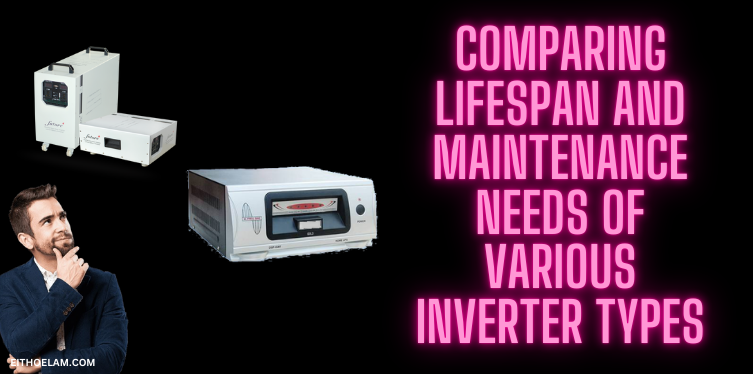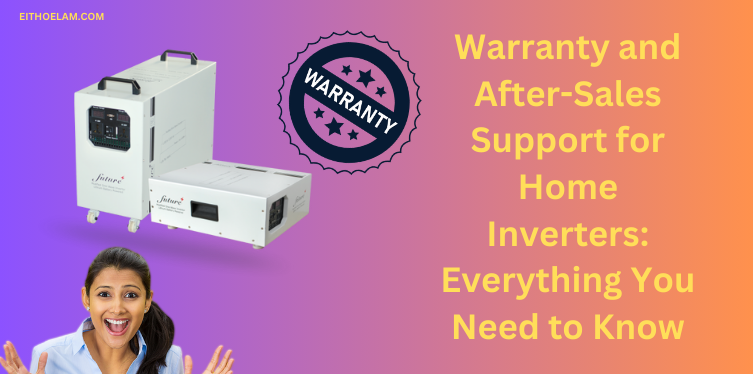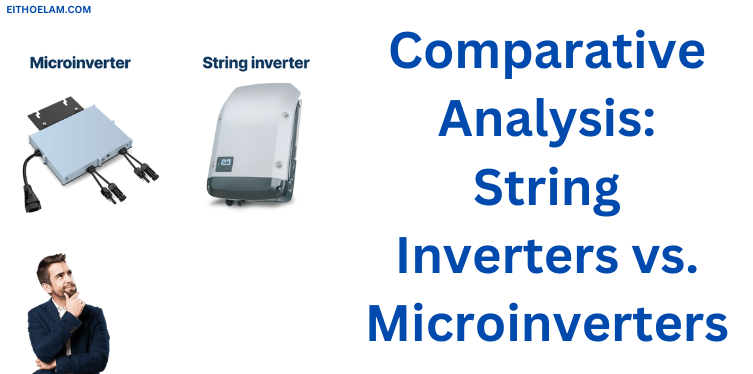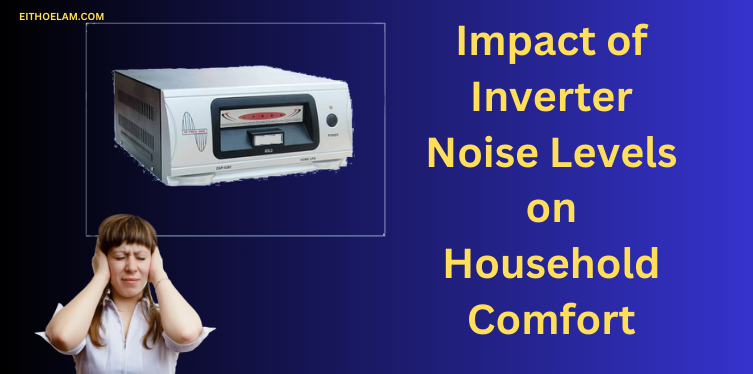Introduction
Inverters are the very backbones of running electrical appliances, tools, or machinery that require AC power from a DC source. Whether using them as a backup for homes, an RV, or industrial machinery, the difference among types can make a major difference in lifespan and maintenance.
In the subsequent sections, we shall describe the lifetime and servicing requirements for each type of inverter so you can select the one which best meets your needs.
1. Types of Electric Inverters
There are many different types of electric inverters, each of which suits slightly different applications and needs. Of these, the three most common are:
- Square Wave Inverters: Probable the simplest and least expensive, these are used in relatively rudimentary applications, such as running small appliances or supplying low-load devices.
- Modified Sine Wave Inverters: This is much better than the square wave inverter, and sine wave output is a little unstable while it is quite good for most household appliances but in some sensitive equipment, it often creates problems.
- Pure Sine Wave Inverters: Pure sine wave inverters produce the cleanest and most stable output, which replicates the AC power coming from the utility grid. They are suitable for sensitive electronics and high-efficiency devices.
Now let’s explore the lifespan and maintenance needs of each inverter type.
2. Lifespan of Different Inverter Types
The lifespan of an electric inverter is determined by the usage, environment, and the quality of the unit. Here’s a general overview of the lifespan of each type of inverter.
- Square Wave Inverters: Square wave inverters are the weakest because they have an average working life of around 5 to 10 years. In general, they are used in applications with lower loads; hence, they undergo a lot of stress but may deliver a less reliable output to cause inefficiency at one point.
- Modified Sine Wave Inverters: This one lasts a bit longer than the square wave, approximately between 8 to 12 years. While better compared to square waves if such considerations are given, these units are less efficient or not used as long as pure sine wave inverters are.
- Pure Sine Wave Inverters: Pure sine wave inverters will have a long life of 10 to 15 years as they are provided with good quality components and have heavy-duty applications. Damage via harm from a dirty output signal cannot reach sensitive electronics in order to cause more lifetimes for this reason.
Also Read: Warranty and After-Sales Support for Home Inverters: Everything You Need to Know
3. Maintenance Needs of Different Inverter Types
Maintenance will add some years to the lifespan of your inverter, whichever kind you choose. The nature of different types of inverters demands different extents of care.
- Square Wave Inverters: With only fewer component requirements, a minimum maintenance is needed on Square wave inverters. Being over-loaded, they consider that as their greatest worry because it can’t have anything more than the lowest and the highest of a good power application. Periodical cleaning in removing dust or debris may be considered only for them to work at length.
- Modified Sine Wave Inverters: One requirement that is more for sine wave inverters is care. It generates heat, so this model should not be left anywhere so that it may breathe properly. Overheating the model needs to review sometimes because if electronics gets overheated, then few of its components will begin to spoil over a particular time period. Cleaning or checking whether the cables and its connections are not loose over a period of time make its longevity secure
- Pure Sine Wave Inverters: Pure sine wave inverters are the most demanding in terms of attention because they are complicated to understand and use. Pure sine inverters generate power in large amount and are commonly used where heavy-duty power is used. Routine service includes cleaning, checking the wear indicators, and proper ventilation for the inverter. Checks should also be made about the connections leading to the battery, not overtasking the inverter.
4. Factors That Affect Inverter Lifespan and Maintenance
The lifespan of any inverter type will surely depend on many factors that might include the following:
- Load on the Inverter: Inverters which power the appliances carrying heavy loads such as an air conditioner, refrigerator, or any industrial machine, experience much wear and tear. They tend to have relatively short lives compared to those used for carrying lighter loads.
- Environmental Conditions: Inverters installed outdoors or in dusty locations and in extremely high temperature locations will be much more sensitive to maintenance and will fail rather more quickly. For maximum life, position your inverter in a cool, dry, ventilated area.
- Quality of the Inverter: Quality of the Inverter Much of the life of an inverter depends upon the build and brand quality. Most high-quality and high-value models produced by renowned manufacturers generally last for a longer time with minimum maintenance as against cheaper and low-quality variants.
- Battery and Charging System: Battery and Charging System: Inverters are usually matched with batteries, and the condition of the battery has much to do with the inverter’s condition. A bad battery can cause too much load on the inverter, thus reducing its life span. So make sure that your battery is maintained correctly as well.
5. Costs of Maintenance and Replacement
When selecting an inverter, you should also consider the cost of maintenance and the potential need for replacement. Here’s a breakdown of the typical costs involved:
- Square Wave Inverters: Square wave inverters are the most inexpensive to maintain and to repair. These are just simple units with a small number of parts, so often the repair is minimal. Still, their relatively short lifetime and lower efficiency might keep your long-term cost even smaller.
- Modified Sine Wave Inverters: Modified sine wave inverters are a mid-range-cost product. As compared to the square wave types, it has relatively higher maintenance and repairing costs. However, if a longer lifespan with good efficiency is obtained, this may prove to be a good trade-off over time.
- Pure Sine Wave Inverters: Pure sine wave inverters are the most expensive in terms of cost and maintenance but provide superior performance and longevity, making them worthwhile for applications that require high-end qualities. Repairing the system is pricier since the system is more complex, but the chance of needing a repair is less compared to other types of inverters.
Conclusion
Choosing the right inverter depends on your power needs and how much maintenance you’re willing to handle. Square wave inverters are cheap and low-maintenance but come with limitations in terms of efficiency and lifespan. Modified sine wave inverters offer a good balance of cost and performance, lasting longer than square wave models but requiring more attention.
Pure sine wave inverters are the most costly to buy upfront, yet superior quality, efficiency, and longevity make pure sinusoidal inverters ideal for power-sensitive electronics and high-power devices.
Eventually, proper maintenance procedure ensures the performance of an inverter lasts as long as possible. Proper inverter maintenance, be it in terms of your choice, ensures efficiency through keeping the inverter clean, temperature control, and proper wiring.
FAQ Section
- How long do electric inverters typically last?
- Electric inverters last anywhere from 5 to 15 years, depending on the type. Square wave inverters last around 5-10 years, modified sine wave inverters around 8-12 years, and pure sine wave inverters can last 10-15 years.
- What maintenance do electric inverters require?
- Electric inverters require regular cleaning, ventilation checks, and inspection for overheating or wear. More complex models, like pure sine wave inverters, need additional attention to cooling fans and battery connections.
- What happens if my inverter stops working?
- If an inverter fails, it won’t be able to convert DC power into usable AC power, and your electrical appliances or equipment will not operate. Depending on the type of inverter, you may need to replace the unit entirely or repair faulty components.
- How can I extend the lifespan of my inverter?
- To extend the lifespan of your inverter, ensure it’s installed in a cool, dry, and well-ventilated location. Avoid overloading it, perform regular maintenance checks, and keep it clean to prevent dust buildup.
- Are pure sine wave inverters worth the investment?
- Yes, pure sine wave inverters are worth the investment, especially if you’re powering sensitive electronics or high-power appliances. They provide cleaner power, protect your devices, and have the longest lifespan, making them a great long-term choice.
Disclaimer: This research utilizes artificial intelligence (AI) to gather insights and support analysis on the topic.






Leave a Comment